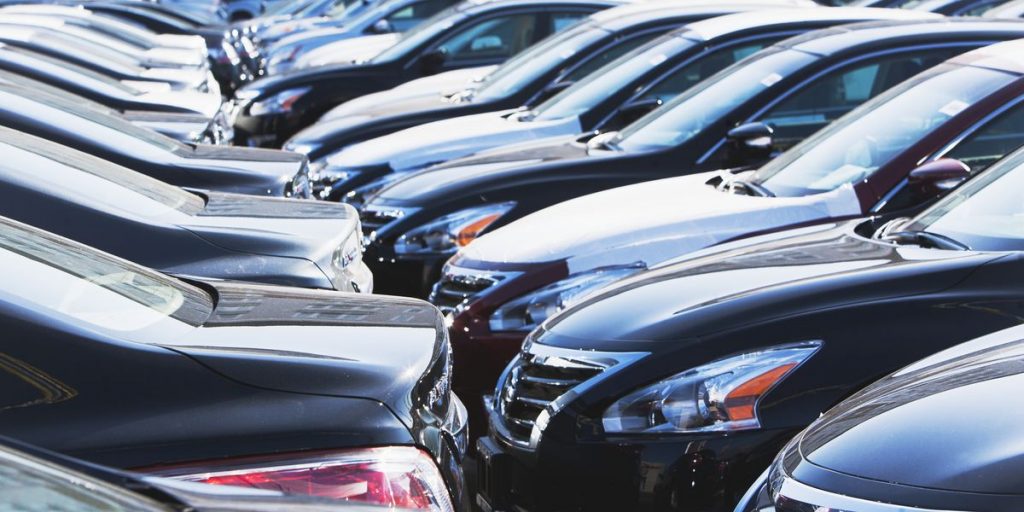A Comprehensive Guide to Leasing vs. Financing a Car

Owning a vehicle is an exciting milestone and achievement in life that most people look forward to making. Before choosing your favorite car, decide whether you will acquire your ride by leasing, purchasing, or financing it.
So, what is the difference between buying a car through financing and leasing? Should you go for leasing or buying? Here is an in-depth analysis of leasing and buying to help you decide which option serves your needs best.
Summary of Leasing vs. Financing
Leasing and buying through financing are two valid methods that allow you to own your dream car. Choosing between owning a car through financing or leasing is a tough call. Each option has its advantages and disadvantages, and you need to weigh several options before settling for the option that makes sense to you.
Financing involves higher monthly payments, but it has fewer restrictions on what you can do with the vehicle and how to drive it. You become the vehicle owner once you’ve completed servicing the loan.
Leasing allows you to possess the car for a few agreed years and requires lower monthly payments, making it less expensive than financing. Leasing allows you to hit the road with more expensive vehicles that you may not be able to afford to finance.
However, leasing comes with several restrictions, depending on the leasing firm. Leasing also puts you in a cycle where you never stop paying for the car.
Buying/Financing a Car
Buying gives you complete ownership of the car. Financing a car means you purchase a car by securing a loan for an extended repayment period.
Purchasing a car through a bank loan or financing is a straightforward process that doesn’t take much time if you meet the criteria. Financing allows you to borrow money from a credit union, bank, or other lending institution and service it through monthly installments for fixed years.
Your bank or credit institution uses your creditworthiness to determine the payable interest toward financing your vehicle. Auto manufacturers sometimes offer special financial terms to buyers, but you need a high credit score to qualify for such incentives.
A new car has a higher price tag than a used car. The payments you make toward financing your car pay the loan interest and settle the principle that a financial institution paid for your car.
You pay a higher price for the car if the financing institution charges higher interest. You can lower the loan amount for the vehicle by making a large down payment when purchasing the car. The car becomes yours once you’ve completed servicing the loan.
What Are the Benefits of Buying a Car?
Purchasing a car allows you to accumulate equity in value assets. Buying a car also has the following benefits.
No mileage limit: Buying a car gives you complete control over your vehicle. You don’t have to keep an eye on the mileage. Whether you want to hit the road across the country and cover over 12,000 miles a year or go on cross-country road trips, the choice is yours. There is no extra fee for surpassing the set mileage. No wear and tear charges: The car is yours. You don’t have to worry about dealer-determined wear and tear. Resale or trade-in with another car: Buying allows you to resale or trade in your current car if you are fed up with it or need an upgrade. You can use the amount you get from selling the car as a down payment and reduce the cost of financing your new ride.
What Are the Drawbacks of Purchasing/Financing a Car?
Buying a car has its downsides, including:
Higher monthly payments: You must spend more per month when buying a car than leasing one. For instance, it costs an average of $417 in monthly payments to buy a Honda Civic in 2022. Hefty down payment: The cost of buying a car through financing reduces if you make a high down payment. The high down payment may drain your savings. Long-term costs of maintenance: Owning a vehicle also transfers all the maintenance costs to you. You have to budget for problems when the car breaks down. The warranty covers some aspects of the vehicle, but you become responsible for the car once the warranty runs out.
Leasing a Car
Leasing a car allows you to pay for the rights to drive the vehicle for an agreed period, usually three to four years. The dealer finances the lease in most cases. Leasing a vehicle works like renting a vehicle for a finite period.
You must make an initial payment covering the fees and taxes to get the new vehicle. Monthly payments throughout the lease life follow the first payment to cover the vehicle’s depreciation costs.
Leases come with mileage restrictions during the leasing period. Another condition is that you return the vehicle in top-notch condition to avoid attracting extra fees for maintenance.
What Are the Benefits of Leasing a Vehicle?
Leasing usually requires lower payments. This car-owning method is effective, especially if you want to keep your monthly expenditures in check to get a new car.
Dollar for dollar benefit: Dollar for dollar allows you to get a higher-end vehicle than you can afford if you purchase or finance it. Leasing allows you to drive the car without spending much money on it. You can also buy the vehicle at an agreed residual price once the lease expires. The dealer may pay the registration fee and the taxes for the new vehicle, further slashing the costs you incur to own a vehicle. Enjoy warranty options: Most new vehicles have at least a 36-month bumper-to-bumper warranty, which lets you enjoy warranty protection throughout the leasing period. A leased vehicle assures you of a hassle-free and smooth ride with minimal unforeseen maintenance costs. With leasing, you forget about the hassle of finding a buyer for your car or haggling with private sellers when the time to move on comes. Enjoy new rides: Leasing allows you to upgrade your ride to a desirable car and get the latest style every two or three years. Leasing is especially suitable for you if you are looking for a short-term transport solution that requires a periodic upgrade.
The Downside of Leasing a Car
Consider the following drawbacks of leasing a car before signing off on an agreement.
Mileage restrictions: Almost every lease has an active annual mileage restriction you shouldn’t exceed. The mileage restrictions range from 10,000 miles to 15,000 miles per year. Exceeding the set limits attracts an extra premium fee of 30 cents per mile. The mileage restriction means you have to watch the distance you drive your car and plan to avoid exceeding the set limit. You are not free to hit the road for long drives, making leasing a car unsuitable if you love adventure and long trips. Additional fees: What you see as normal wear and tear can attract additional costs to your monthly payment, depending on the dealer. Scratches and dings are some of the wear and tear signs dealers consider excessive. You must maintain the vehicle in excellent condition to avoid paying additional fees. You don’t own the car: One of the most significant downsides of leasing a vehicle is that you don’t have equity in the car. You return the car to the dealership upon the expiry of the lease term unless you opt for a lease buyout. Picking a lease when another lease is over puts you in an endless cycle of payments to buy driving rights. You spend more on leasing a car than it would have taken to purchase a new vehicle. Early termination of the lease may cost you: It is costly if you terminate the lease early because you can’t afford it or don’t like the car. You will likely incur thousands of dollars for penalties and early termination fees that you need to clear immediately. The resultant charges may equal the whole lease amount.
What Is the Maximum Mileage I Can Put on a Leased Car?
Car dealers put a mileage limit on leased vehicles to preserve the vehicle’s value and keep depreciation costs low. The standard mileage limit is 10,000 miles per year, and any extra mile the vehicle covers goes to your final billing. Some leases set the mileage limit between 12,000 and 15,000 for long-distance commuters.
However, an increased mileage limit attracts higher monthly payments. A shift in your commuter circumstances significantly impacts the cost of the lease, depending on the miles exceeding the set mileage.
What Is the Cost of Maintaining a Car?
Wear and tear is a hidden maintenance cost that may catch you off-guard. The dealer bills you if your leased car returns with paint scratches, dents, and stained interiors. Ensure that the leased vehicle is in pristine condition to avoid these charges. Most lease agreements require removing any customization features before returning the car.
New vehicles have a bumper-to-bumper warranty that often lasts throughout the lease, but you are responsible for any routine maintenance. A few vehicle brands offer regular maintenance for some years for newly purchased vehicles.
The table below shows the average cost of maintaining a car by vehicle type. The estimations factor in the depreciation, finance, fuel consumption, insurance, license, registration, taxes, maintenance, repairs, and tire costs.
Car type
Ownership cost in cents/mile
Small sedan
$48.20
Medium sedan
$62.44
Subcompact SUV
$53.45
Compact SUV
$56.63
Medium SUV
$66.45
Midsize pickup
$62.77
Half-ton pickup
$77.25
Hybrid
$66.06
Electric
$61.96
What Factors Should I Consider When Leasing or Buying a Car?
There are many pros and cons to buying or leasing a car. What makes sense to you might not make sense to someone else. Here are the main factors to consider when determining whether to buy or lease a car.
How Much Can You Afford as a Monthly Payment?
Figure out how much you can willingly spend toward financing the car monthly. Monthly lease payments are friendlier than loan payments if you’re looking for the cheapest options. Leasing is more affordable because you aren’t paying for the car’s buying price.
The limitation of leasing here is that you can’t recoup the money you invested in the vehicle later because leasing doesn’t accumulate equity value. Buying allows you to own the vehicle, and you can recoup the money by reselling it later.
Go for leasing if your concern is having the smallest monthly payments.
What Do You Intend to Use the Car For?
Do you need a car to commute for short or long distances? How many miles do you anticipate putting on the car’s odometer? Every leased car has a mileage restriction — most leases restrict the mileage to 1,000 miles per month.
For instance, your car needs to cover 250 miles per week. This pace surpasses the 12,000 miles per year limit. Calculate your possible lease terms and see how it compares with buying or financing. Buying a car is worth it if the projected leasing costs accumulate insane amounts.
How Frequently Should You Swap Cars?
Is it essential that you always drive a new car, or can you put up with an aging one? Leasing works if you swap cars for the latest models after two to three years. Buying makes sense if you don’t mind keeping the same car for over four years.
Is Leasing an Alternative to Long Car Financing Loans?
You may finance your car through a longer-term loan that takes six to eight years to repay. The main advantage of a longer-term loan is that it lowers the monthly payments. However, extended period loans are riskier, making leasing a better option.
Longer loans may turn the tables upside down when a scenario arises, causing you to owe more than the vehicle’s worth. For instance, your vehicle’s value is likely less than you owe if it is stolen, destroyed, or has trade-ins. Reselling reduces the vehicle’s value and increases the value you owe the financing institution.
What Happens at the End of a Lease Period?
Ownership is the most significant difference between leasing and buying a car. You build equity value with the monthly loan payment you make toward settling your car financing. The financial institution pays the principal amount to the leasing company and keeps the remaining amount.
A lease allows you to return the car to the company and pay a fee ranging from $350 to $500. You come up with new terms and down payment methods, whether you want to keep the vehicle through a lease-purchase or sign a new lease.
How Does Buying/Financing Differ From a Lease?
The following table gives a comprehensive summary of how buying a vehicle differs from leasing.
Leasing
Buying
Ownership
You don’t own the leased vehicle. You can use it, but you must return it to the dealer when the lease term expires. Buying enables you to walk away with full ownership rights of the vehicle. You don’t return it as you can keep it as long as it serves its purpose and dispose of it at will.
Upfront costs
The upfront costs of leasing include the first monthly payment, acquisition fee, refundable security deposit, and other costs related to lease signing and delivery.
The payment includes a down payment for the vehicle, taxes, and registration fees.
Monthly payment
Lease payments are mostly lower than financing monthly payments. For a lease, you only pay for the vehicle’s depreciation, plus rent charges. Your financing monthly repayments are higher than lease payments. The higher monthly payments result from paying for the vehicle’s entire purchase price, interest, taxes, and other financing charges. Vehicle return and future valuesYou return the vehicle to the dealer at the end of the lease period and decide whether to sign another lease agreement.
The vehicle’s future and depreciation don’t affect your finances as you have no equity. You decide when to sell the vehicle or exchange it for a new car with add-ons.
The vehicle’s value depreciates, but it remains yours.
Early return
You pay early-lease termination costs and penalties.You deal with the hassle of selling or trading in the car if you want a different one.
Customization
You need to remove any modifications you do to the vehicle before returning the vehicle.You are free to modify the vehicle however you choose because it is yours. Some modifications may render your warranty void.
Mileage
Leased vehicles have mileage restrictions, with most dealers setting mileage at 10,000 to 12,000 miles per year. Drive your vehicle freely and cover as many miles as you wish without worrying about exceeding mileage limits.
Frequently Asked Questions About Vehicle Leasing vs. Buying
How Much Down Payment Do I Need When Leasing a Car?
A larger down payment lowers your monthly payment if you’re financing a car. The amount of down payment does not help much when leasing a car. Always ask for two quotes, where one bears a down payment that you can afford and the other quote whose down payment you can’t afford. Compare the two costs to determine which one works best for you.
Monthly payments are lower for leasing than financing because leasing does not pay for the car’s total cost. Financing means paying for the vehicle’s entire value, which drives the payment up. The monthly payments cease once you complete the financing term and the vehicle becomes yours.
Does Leasing a Car Have Insurance Implications?
Leasing a car attracts higher insurance premiums as the leasing company technically owns the vehicle you drive and wants to ensure that the vehicle has a comprehensive cover. The baseline insurance coverage is not high if you finance a car because you own the car. Find out from the leasing company about the car’s insurance terms.
How Long Will I Keep a Car?
Most lease terms expire within three years, although some can extend to four years. Leasing is a better option if you like upgrading a car every three to four years. Financing your vehicle through a bank loan makes more sense if you plan to keep the vehicle for the long term.
What Happens If I Return My Car Before the Expiry of the Lease?
Turning in your car before the lease term expires means making all the remaining payments and end-of-contract fees.
Can I Customize a Leased Car?
Leased cars have restrictions, including removing all customization features before returning the car once the lease term expires. You may want to buy a car through bank loan financing to enjoy the freedom of customizing it to express your personality. There is no limit to customization if you buy a car.
Can I Use the Car for a Side Hustle?
A leased car can’t serve your side hustle desires because of the mileage restrictions and other limitations that the leasing company imposes to ensure that the car remains in excellent condition. Most leasing contracts restrict using the leased car for any business. Exceeding the mileage increases the cost of the lease. Always consult the leasing company if you plan to use the car for business.
Can I Negotiate in Leasing?
The printed monthly payment in the lease agreement is not etched in stone. Remember, these figures are often based on the car manufacturer’s suggested retail price. There is room for downward negotiations. The available lease deal depends on your creditworthiness as a superb credit score offers better discounts.
Make a Decision
So, should you buy or lease a new car? The answer to this question depends on carefully assessing your driving habits and financial situation. How much can you pay comfortably upfront each month toward financing your car? How many miles do you intend to cover?
Buying a car is one of the more significant financial decisions you’ll make. Before heading to the dealership, calculate the payments, maintenance, and resale value. Understanding what you need helps you to avoid any impulsive, emotional choice. Find out more information from lending sites on loan calculators and lease payments.
Elizabeth Rivelli is a freelance writer with more than three years of experience covering personal finance and insurance. She has extensive knowledge of various insurance lines, including car insurance and property insurance. Her byline has appeared in dozens of online finance publications, like The Balance, Investopedia, Reviews.com, Forbes, and Bankrate.




